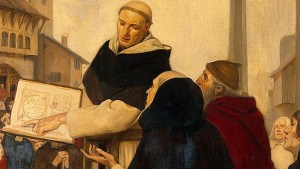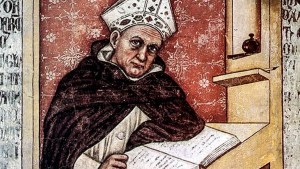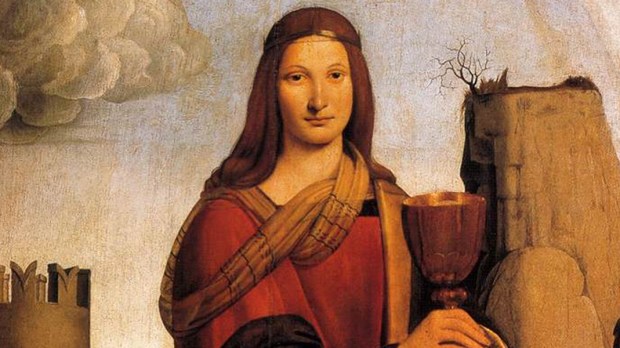St. Barbara was born sometime in the middle of the 3rd century in Heliopolis, a city that today would be located somewhere in Lebanon. Barbara’s pagan father was a rich and influential man named Dioscorus.
As Barbara grew, she became more and more beautiful. When her mother passed away, her father became fixated on Barbara and began devoting himself to her in an ever-increasing and overbearing manner. He decided to hide her from anyone who did not know her.
Dioscorus built a tower for his daughter, and only her pagan teachers and servants were allowed to see her. Barbara had a view of the surrounding woodlands and would stare at the flowers in the meadows and the running streams. She began to wonder where they came from. Her reasoning helped her to realize that there must be a First Cause for such order and beauty.

Read more:
Perhaps no one shows better the Faith-Science alliance than this saint
It followed that Barbara’s reasoning would take her to realize that the idols her father and the pagans worshiped were soulless and possessed no power. She knew these “things” could not have created the world she could see. A desire swelled within her to know the real Creator of the world. She decided to spend her life in a state of virginity and to find this Creator.

Read more:
Atheist chat with Bishop Robert Barron makes me want to read Peter Kreeft
But word of the beautiful young woman hidden away spread throughout the city, and many came to ask for her hand in marriage. Her father wanted her to marry someone he chose. She begged him to let her live her own life and told him that his persistence would drive them apart.
Dioscorus did not listen. But he did decide that his keeping her locked in a tower may have caused her to reject a different lifestyle. He proceeded to give her permission to leave the tower giving her freedom to choose her friends. Barbara headed into the city and met some young maidens. These ladies taught her about God and creation and the Blessed Trinity.
Soon after (and, many believe it was a special miracle of God’s grace) a priest from Alexandria, disguised as a merchant, arrived in Heliopolis. He spent time with Barbara instructing her in the Christian faith. Soon she was baptized, and after that, the priest returned to his own country.
Dioscorus wanted his daughter back home, so he decided to build her a beautiful house of her own with a huge bathhouse within. He ordered the bathhouse to have two windows, but Barbara asked the workers to put in three. She wanted them to represent the Blessed Trinity. She also carved a cross into the marble wall near the windows.
Her father was angry at the window being added, and when Barbara explained why she had done it and how she had become a Christian believing in the Triune God, Dioscorus was enraged. He grabbed his sword and was about to strike her with it, but she managed to run away.
He chased after her but she reached a hill that had a small cave, and she hid inside. Her father, unrelenting, tracked her down, found her, and dragged her from the cave. He handed her over to Matrianus, who was the head of the local authorities. Barbara was beaten again and again and during her torment prayed continually for courage and strength.
Finally, after being beaten and tortured and still refusing to give in to her father’s demands, Dioscorus took his daughter out to a field, and with his sword, beheaded his own child. It is said that on the way back to the compound he was struck by a bolt of lightning, and his body was devoured by flames.
As St. Barbara died in the late third century, much of what we know about her comes from the book called the Golden Legend (Legenda Sanctorum) written and compiled by Jacobus de Varagine. His work was the primary source for acquiring information about many saints and was used up until the Protestant Reformation when the “new learning” took hold in theology.
St. Barbara is among those who are called the Fourteen Holy Helpers and her protection is sought against lightning, fire, and explosions. Her feast day, shared with others (including St, Peter Chrysologus and St. John Damascene), is December 4.
St. Barbara, please pray for us.

Read more:
7 Saints who found God through philosophy

